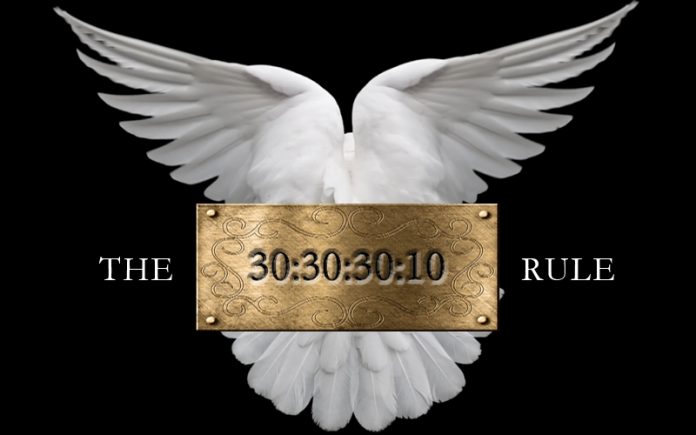When in a tight schedule, the 30-30-30-10 rule turns out to be quite effective. It helps in making a confident decision. Here is how.
Recruitment is not a sales job that one can start selling to the first resume that matches the search from the job portal. Finding the right and fittest candidate is a long drawn process. However, the challenge is that we continue to fight against time when every requirement becomes urgent and immediate.
In such a scenario, the 30-30-30-10 rule turns out to be quite effective. It helps in making a confident decision. Here is how.
The First 30
The moment one receives the requisition for a position, it is advisable to spend some time in searching for the probable candidates. It’s not necessary to look for candidates from within the industry.
There are many non-matching industries where the basic role and the format of job remain similar. An industry change can be a lucrative offer from many prospects. In fact, at times, it serves as a big motivation for people who have been stagnant in their roles.
Simultaneously, it is important gather as much information as one can about the client. One should utilise the first 30 per cent of the time in just researching about the candidate and the client.
The Second 30
One should not just jump and login to the job portals at the first go. Chances are that one will find desperate job seekers, who will agree to all terms. However, this can often turn out to be a very costly mistake.
It is important to ask candidates to provide two professional references. This serves two purposes. One, it makes the candidature recommendation stronger in front of the client. Second, it’s a way of creating a database of passive jobseekers— the main source of good candidates!
Every headhunter has its own database and if this becomes a robust one, chances are that one may not even need to go beyond three resumes before closing one position! This is where one should invest the next 30 per cent of your time.
The Next 30
Once one zeroes in on the candidate, the next line of action should be a two-step interview process.

First, with the objective of employing the candidate, as the information gathered in the process, stands in good stead. The level of communication decides whether the candidate will take the opportunity seriously.
Many a times, as a candidate, we would not have even listened to the consultant, if they failed make an impression in the first five seconds.
Therefore, a head hunter, has just five seconds to grab the undivided attention of the candidate.
Next, recruitment firms should present the candidate as a full package in front of its client. It’s wrong to just send the resume. One should always add one’s insights and recommendation.
This gives confidence to the client the headhunter is fully aware of its needs. It also, in a way, reduces the client’s load. One should use the last 30 per cent of the time here.
The Final 10
A well-planned assignment will either give good results or a good lesson.
If the recruiter dumps a 100-odd resumes on the client’s table, the latter will not even feel the need to apprise the former with the feedback, update or any additional information.
If the recruitment firm convinces the client that it is well aware of its needs, chances are that the latter will put in that extra effort. So, it is important to utilise the remaining 10 per cent of the time, to enrich oneself with the right and adequate feedback.
(The author is HR manager, Shapoorji Pallonji Armada Oil Exploration)
Value our content... contribute towards our growth. Even a small contribution a month would be of great help for us.
Since eight years, we have been serving the industry through daily news and stories. Our content is free for all and we plan to keep it that way.
Support HRKatha. Pay Here (All it takes is a minute)




































A very good read…
Very useful information, thanks for sharing with us, keep up the good work!
Learned a lot from your blog, keep up the good work and share more like this.
Very Nice!! Thanks for Sharing..